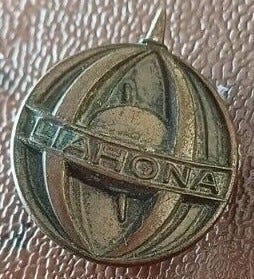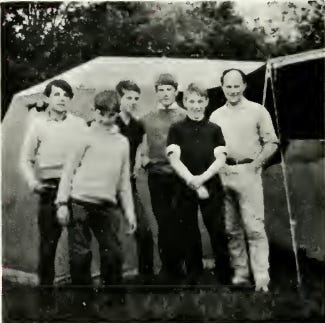Vanguard Badges
An episode of Scouting history
The Vanguard Scouting programme was originally organised by The Church of Jesus Christ of Latter-day Saints in 1928. It was the entity through which 15-16-year-old young men participated in Church-sponsored Scouting. At the time many Latter-day Saint leaders strongly encouraged participation in Scouting, which included Apostles such as George Albert Smith and Melvin J. Ballard.
In 1933 the Boy Scouts of America sought permission to model a new scouting programme for older youth on the Vanguard model, which the Church consented to. This became known as the “Explorer” programme. Two years later the Church adopted the same name and the Vanguard branding, per se, was mothballed.
In the early 1960s, Scouting began to be encouraged in the various international missions of the Church. In due time, the “Vanguard” programme was resurrected and placed under the direction of the Young Men’s Mutual Improvement Association. The new programme was designed for young men aged 12 to 14. There was a missionary dimension to the endeavour and it appears to have been designed to inspire, motivate, and lead to self-development. The ideal result, it would seem, was to have participants choose to serve as missionaries.
Vanguards received a badge and as they progressed through the ranks of membership. I recently purchased a badge, which was intended for new members of the programme. It was known as the ‘Membership badge’ and had one point of a spindle protruding from it. Mine is a little worn, but in good shape considering it is about 60 years old.
The programme had five ranks or stages that participants were expected to work their way through. Each had a corresponding badge or ribbon:
Membership badge has 1 point
Apprentice badge has 2 points
Explorer badge has 3 points
Master badge has four points
The Liahona badge has 4 points and is suspended from a ribbon
Crucially the programme was presented as a combination of organised activities as well as a guide for personal living through its established standards.
Here is the Vanguard Standard
I will always be alert and determined to:
Maintain and strengthen my body, my mind, and my spirit;
Carry out my responsibilities to my Heavenly Fathers;
Discharge my obligations as a citizen of my country;
Help my fellow men as I can.
In the British Mission, which is where this pin was most likely awarded, Vanguard Scouting groups were organised across the country in the 1960s. In the summer of 1967, a group of ‘Vanguard boys’ and their leaders from the St Alban’s Ward, which included Bishop Thomas Hill, camped at a farm in East Grinstead.
Everyone participated in the various duties including pitching tents, preparing a pot of stew, and playing games. At 4 a.m. the lads were up playing football and the day began. After breakfast the group departed for the London temple where “a considerable amount of baptismal work was performed by the boys.” After some time in the temple they made their way back to their camp, ate, packed away the tents, and arrived back in St Albans at 9.45pm ‘tired, grubby, but looking forward to doing the same thing again another time.’1
In 1967 several young men received their Vanguard pins with one of them, Paul Nicholas, receiving a membership pin just like the one I recently collected.2 Interestingly the Church History Department had some of the badges but not all of them.
There were different accounts of Vanguard Scouting events held in 1967, which seems to have been a busy year for the movement. Here’s another activity:
Six " Vanguard " boys of the Loughborough Branch Cadre held a week's camp at Over Haddon in the Peak District during August. They fulfilled various Vanguard requirements, like map reading exercises, hiking, cooking over open fires and swimming. The boys' spiritual welfare wasn't neglected either, for they held a Sacrament Meeting the day after their arrival which Brother H. I. Simpson conducted. The Cadre looks forward to camping next year with other Cadres in a competitive spirit, and to receiving their badges. Now they’re planning a winter programme that will include preparation for next summer’s boatbuilding project.3
While traditional scouting activities such as hiking and fire starting appear to have been common, others, including sports, also took place. In March 1968 Yeovil Vanguards formed part of a football team that played a team from Weston-Super-Mare. They played on Weston’s sandy beach and Yeovil won!4
At some point, the Vanguard programme and Scouting generally wound down in the British Isles. There are many programmes, initiatives, and other aspects of Latter-day Saint history that have been lost to time. As I continue to explore Church History I discover that there is still so much about the Latter-day Saint experience to be gathered, preserved, and shared.
‘St. Alban's Ward Members Enjoy Special Outings,’ Millennial Star, Vol. 129, No. 11 (1967), pp. 20-21.
‘News Flash,’ Millennial Star, Vol. 128, No. 12 (1967), p. 50.
‘Branch and District Activities,’ Millennial Star, Vol. 10, No. 10 (1967), p. 319.
‘Special News,’ Millennial Star, Vol. 130, No. 6 (1968), p. 64.



